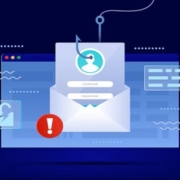Phishing Attacks Are on the Rise — Here’s How Your Business Can Stay Protected
In today’s digital landscape, phishing attacks remain one of the most dangerous and prevalent threats to business security. As a cybersecurity company, we’ve seen firsthand how a single deceptive email can lead to devastating consequences—data breaches, financial losses, and long-term reputational damage. Fortunately, there are proven strategies businesses can adopt to stay a step ahead of cybercriminals. Let’s explore how your company can recognize, prevent, and defend against phishing attacks.
What Is Phishing?
Phishing is a form of cyberattack where attackers impersonate trusted sources—often via email—to trick individuals into revealing sensitive information like passwords, credit card numbers, or access credentials. These attacks can be highly targeted (spear phishing) or sent in bulk (mass phishing), but the goal is the same: to deceive and exploit.
Why Are Businesses Prime Targets?
Small and midsize businesses are especially vulnerable because they often lack dedicated security teams or advanced security tools. Even larger enterprises aren’t immune—phishing bypasses technical defenses by targeting the human element, which is often the weakest link in security.
Phishing emails are increasingly sophisticated, often mimicking the branding, language, and tone of real companies or internal communications. An employee may receive what looks like a request from their CEO, a message from a known vendor, or even an alert from their IT department.
7 Proven Strategies to Defend Against Phishing
- Security Awareness Training
The most important defense against phishing is an informed workforce. Employees should be trained to:
- Identify common phishing tactics
- Recognize suspicious email addresses, links, and attachments
- Avoid clicking on unverified links or downloading unknown files
- Report suspected phishing attempts to your IT or security team
Conduct regular simulated phishing campaigns to test readiness and reinforce good habits.
- Email Filtering and Anti-Phishing Tools
Advanced email security solutions can automatically filter out many phishing emails before they reach inboxes. These tools analyze sender reputation, scan for known malicious links and attachments, and detect abnormal language patterns.
Look for solutions with real-time threat intelligence and machine learning capabilities to adapt to evolving phishing tactics.
- Multi-Factor Authentication (MFA)
Even if an attacker successfully obtains login credentials, multi-factor authentication adds an additional layer of protection. With MFA, a second form of verification (like a code sent to a phone or a fingerprint scan) is required to access systems—greatly reducing the effectiveness of stolen passwords.
- Strong Password Policies
Implement a robust password policy across your organization. This includes:
- Requiring complex passwords
- Enforcing periodic password changes
- Prohibiting password reuse
- Encouraging the use of password managers
The stronger your password hygiene, the less likely a phishing email will result in successful credential theft.
- Incident Response Plan
No system is perfect. That’s why it’s essential to have a well-documented incident response plan that outlines what to do if a phishing attack is suspected or confirmed. Key components include:
- Immediate user notification and account lockout
- Isolation of affected systems
- Forensic analysis and damage assessment
- Communication with stakeholders and compliance bodies (if necessary)
Having a plan in place can dramatically reduce downtime and minimize the impact of an attack.
- Keep Software and Systems Updated
Phishing attacks often exploit known vulnerabilities in outdated software. Ensure that your operating systems, email clients, browsers, and endpoint protection software are always up to date. Patch management tools can help automate this process across your network.
- DNS and Domain Protections
Use domain-based protections like SPF (Sender Policy Framework), DKIM (DomainKeys Identified Mail), and DMARC (Domain-based Message Authentication, Reporting & Conformance). These email authentication protocols help prevent attackers from spoofing your domain and tricking your customers or employees with lookalike messages.
The Cost of Doing Nothing
According to industry reports, the average cost of a phishing attack to a mid-sized business can exceed $100,000—not including the long-term reputational harm. In some cases, phishing has led to major data breaches and regulatory fines. But beyond the numbers, there’s the loss of customer trust—something that can take years to rebuild.
Partnering with the Right Cybersecurity Provider
At Remington Computer Services, we specialize in helping businesses proactively defend against phishing attacks. From employee training and phishing simulations to advanced threat detection and incident response, our services are designed to build a security-first culture and infrastructure within your organization.
Whether you need a one-time phishing assessment or a fully managed security solution, we’re here to help. Our team of cybersecurity professionals works alongside your internal staff to implement best practices, monitor threats, and respond rapidly if something slips through the cracks.
Final Thoughts
Phishing attacks are not going away—in fact, they’re only getting smarter. But with the right combination of education, technology, and processes, your business can stay protected. Don’t wait until after an incident to take action. Start now. Empower your employees. Secure your systems. And partner with cybersecurity experts who know how to keep you safe.
Want to learn more about protecting your business from phishing? Contact Remington Computer Services today for a free consultation.




